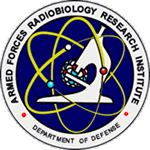
Photo from wikipedia
Biodosimetry is an important tool for triage in the case of large-scale radiological or nuclear emergencies, but traditional microscope-based methods can be tedious and prone to scorer fatigue. While the… Click to show full abstract
Biodosimetry is an important tool for triage in the case of large-scale radiological or nuclear emergencies, but traditional microscope-based methods can be tedious and prone to scorer fatigue. While the dicentric chromosome assay (DCA) has been adapted for use in triage situations, it is still time-consuming to create and score slides. Recent adaptations of traditional biodosimetry assays to imaging flow cytometry (IFC) methods have dramatically increased throughput. Additionally, recent improvements in image analysis algorithms in the IFC software have resulted in improved specificity for spot counting of small events. In the IFC method for the dicentric chromosome analysis (FDCA), lymphocytes isolated from whole blood samples are cultured with PHA and Colcemid. After incubation, lymphocytes are treated with a hypotonic solution and chromosomes are isolated in suspension, labelled with a centromere marker and stained for DNA content with DRAQ5. Stained individual chromosomes are analyzed on the ImageStream®X (EMD-Millipore, Billerica, MA) and mono- and dicentric chromosome populations are identified and enumerated using advanced image processing techniques. Both the preparation of the isolated chromosome suspensions as well as the image analysis methods were fine-tuned in order to optimize the FDCA. In this paper we describe the method to identify and score centromeres in individual chromosomes by IFC and show that the FDCA method may further improve throughput for triage biodosimetry in the case of large-scale radiological or nuclear emergencies.
Journal Title: Methods
Year Published: 2017
Link to full text (if available)
Share on Social Media: Sign Up to like & get
recommendations!